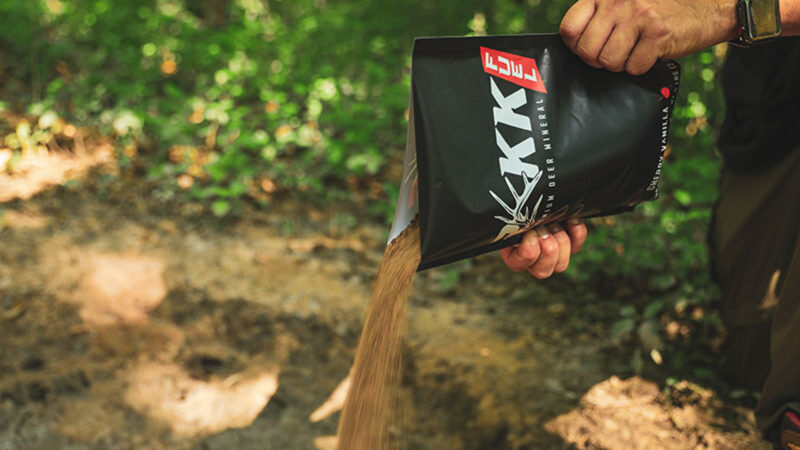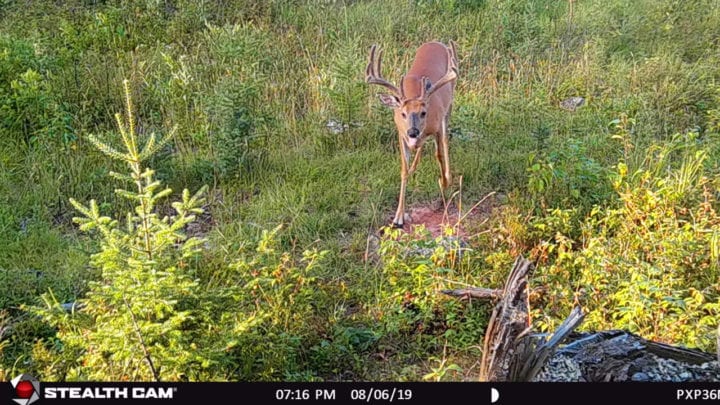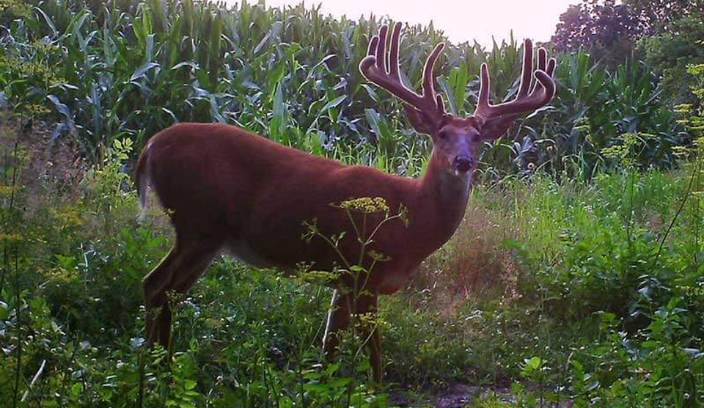The benefits from providing wild deer a protein supplement has been proven by a number of research projects. I actually conducted the first supplemental feed study in Texas back in 1975 and found that the benefits derived initially were an increase in body weight and survival rate of fawns.
Now after many years of supplemental feeding, Texas wildlife managers and management-oriented hunters have witnessed the impact it has on antler size, but continue to investigate methods of providing deer a mineral supplement that works synergistically with their pelleted feed rations in order to augment antler size even more.

The basic problem with deriving hard scientific data on mineral supplementation requirements of white-tailed deer are the many variables that occur.
In other words, the difference between a control group (non-supplemented deer) and a test group (deer minerally supplemented) is the amount, or the digestible quantity of the specific test mineral consumed by deer.
Minerals are inorganic substances, neither animal nor vegetable, that develop from inorganic processes. Minerals also have specific functions like salt, which consists of sodium and chloride. Both perform certain functions. Sodium, for example, helps maintain cellular integrity.
Minerals are divided into two groups referred to as macro and trace minerals.
Macro minerals are acquired in large quantities to sustain normal life. Calcium, phosphorus, magnesium, potassium, sodium, and chloride are in this group.
Trace minerals are required in smaller quantities, but are equally important to maintaining normal biological functions. Trace minerals include zinc, copper, manganese, iodine, selenium, iron, and cobalt.
Minerals play a vital role in everything from enzyme activity to muscle contraction as well as a major role in antler growth.

When antlers begin developing in early spring and antler buds appear on the buck’s pedicels, a protein matrix is formed which delegates the antlers’ basic shape and structure. As antlers develop, minerals are deposited on a protein matrix by a process called mineralization.
Although antlers are composed of 80% protein, the mineral component is a vital part of its development. Possibly the best way to understand antler development is to compare it to the construction of a highway overpass. All the forms, rebar, etc. can be thought of as the protein matrix while minerals represent the concrete.
The animal skeletal system is the primary source for antler mineralization by a process similar to osteoporosis, but the minerals must be replaced with what deer consume, which adds some promise to mineral supplementation.
Antler growth is secondary to a deer’s health, thus if adequate levels of nutrients are not available in their diet, antler size declines. If minerals are minimal in a deer’s diet, less can be drawn from the skeletal system also impacting antler size.
The impact on antler growth of nutritionally stressed deer is most obvious in one to three-year-old deer because before maturity, body growth takes precedence over antler size. But upon maturity, when body growth ceases, more of their diet is available for antler growth.
A solidified antler is composed of 22% calcium, 11% phosphorus, and 3% magnesium. Hardened antler is approximately 55% mineral. The importance of calcium, phosphorus, and magnesium is obvious, but additional minerals play vital roles as well.

For example, copper is a cofactor in many enzymatic processes; one in particular is the production of collagen, one of the major proteins in the antler matrix. Manganese is important for bone formation, and iron is involved in the production of hemoglobin.
As one can see by now, the development of antlers is a web of minerals and protein working in concert for the development of those antlers sportsmen cherish.
The question remains, is mineral supplementation a productive way to augment antler size? And although there exists no science-based study that indicates that it does, there is no study that dictates that it doesn’t, thus the door remains open to investigate the impact of mineral supplementation.
Deer are extremely selective as to what they consume. Based on the hypothesis that deer will or will not consume a mineral source, I have experimented with mineral supplementation based on soil tests. By determining which minerals, particularly calcium and phosphorus, were limited, I began distributing five to 10 pounds of a fertilizer absent of nitrogen into small manmade shallow holes in the ground and monitored their use.
What I found was deer in some areas spent considerable time at the sites pawing away at the soil, making me believe that the animals’ attraction to the supplement was something to continue investigating. However, measuring its impact on antler size was nullified because of the many other factors that affect antler size such as rain and plant diversity.
Possibly the best way to measure its impact is by collecting harvest data over time and searching for trends of improvement in antler size by age class. As a result, I cannot say that mineral supplementation augments antler size, but what I can say is that deer consume it, and it is not that expensive, so it remains worth the effort.





